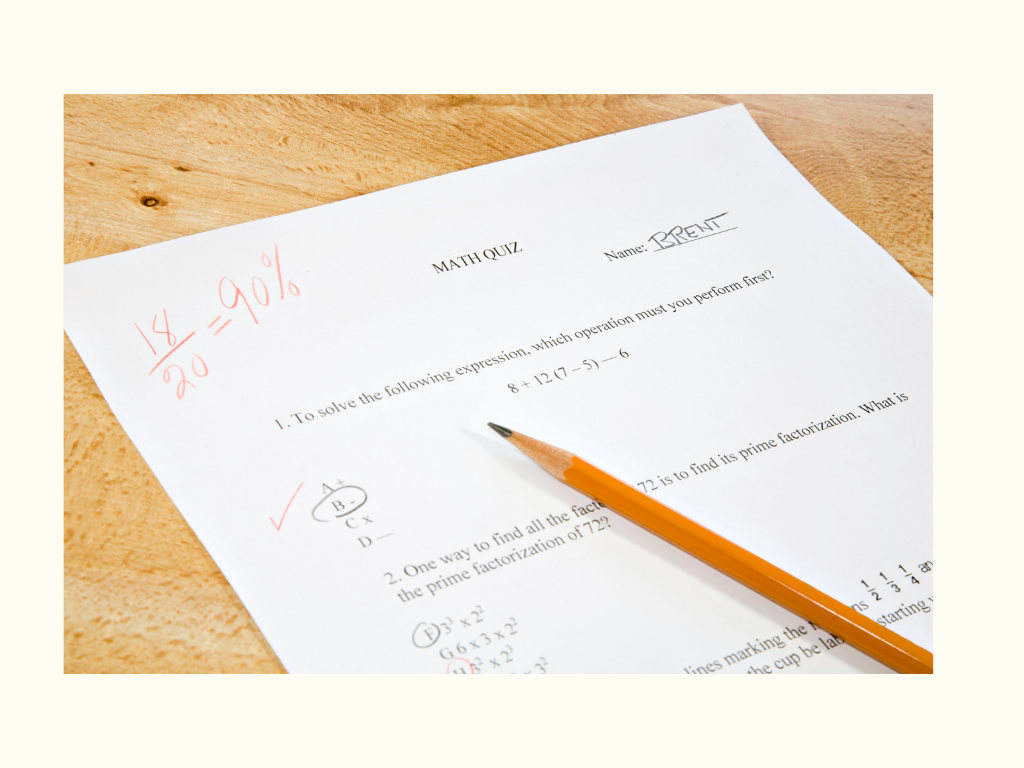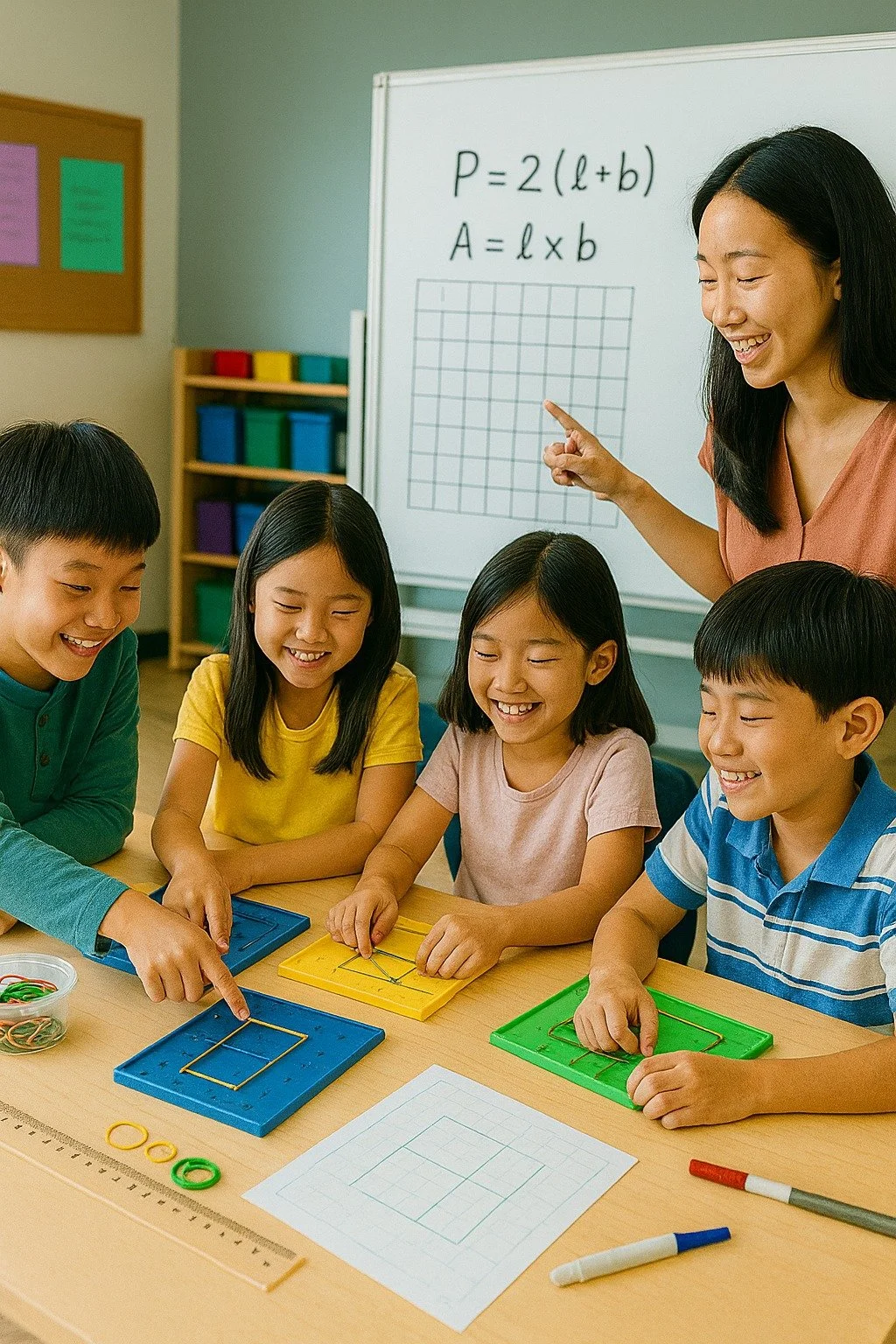What does “success” in school looks like now? Can Play and Academic Rigour Co-exist?
1. Origins of a Question
Can play and academic rigour truly coexist?
At Maplestars Academy, this question isn’t theoretical. Our founders are former MOE teachers who have journeyed through the Singapore education system twice — first as students, then as educators. Now in their early thirties, they have taught through policy shifts, new syllabi, and changing expectations of what “success” in school should look like.
Their conclusion, shaped by both classroom experience and research: playful, experiential learning and high academic standards not only can coexist — they strengthen each other when done well.
Figure 1: Coexistence of Play and Academic Rigour
2. A Look Back: When Grades Were Everything
In the early 2000s, Singapore’s education system was known for its strong academic focus. High-stakes tests, class and level rankings, and public recognition of top scorers were familiar features of school life. Academic performance was often seen as the primary measure of a child’s worth and potential.
Figure 2: Math Test Paper
In 2005, the Ministry of Education launched the Teach Less, Learn More (TLLM) initiative, calling for teachers to focus less on rote coverage of content and more on deep learning, engagement, and understanding. The aim was to “teach better” so that students could “learn more” — not in terms of volume, but in terms of quality and relevance.
This marked the beginning of a quiet but significant shift.
3. Beyond Grades: A System That Values How Students Learn
Over the years, many schools started to move away from purely rank-based recognition, towards celebrating positive learning dispositions — traits like resilience, curiosity, perseverance, and collaboration. This aligns with MOE’s 21st Century Competencies (21CC) framework, which highlights critical thinking, communication, collaboration, civic literacy, and global awareness as key outcomes for all students.
Figure 3: Collaborative Learning among Students
At the same time, class composition shifted. Instead of strictly streaming or banding by academic ability, many schools moved toward mixed-ability classes. In such classrooms, a high-performing student and a student who needs more support may sit side by side, learning together. The goal: to build inclusive learning communities that develop both academic and socio-emotional strengths.
These changes signalled a broader vision: to nurture not just exam-ready students, but future-ready individuals.
4. The Rise of Play-Based and Experiential Learning
As policies evolved, so did what lessons looked like on the ground.
MOE teachers, especially in primary schools, were trained in the Concrete–Pictorial–Abstract (CPA) approach for mathematics. Students first explore ideas using hands-on materials (concrete), then visual representations (pictorial), before working with symbols and equations (abstract). This approach is now a recognised strength of Singapore Mathematics and is closely connected to developing 21st century competencies like reasoning, problem-solving, and communication.
Classrooms also began to incorporate:
Manipulatives: such as counters, fraction strips, and geometric shapes to build strong conceptual understanding.
Real-world contexts: word problems and projects tied to everyday life to make learning meaningful.
Educational technology: platforms and devices like tablets that support interactive quizzes, immediate feedback, and self-paced practice.
An “ideal” lesson today is not one where students sit silently copying notes, but one where they are actively working together, asking questions, experimenting, and explaining their thinking — all while working toward clear academic goals.
Figure 4: Use of Manipulatives to Aid Learning
5. Did Academic Standards Decline?
With more emphasis on joy, play, and 21CC, one common concern arises:
Has academic rigour suffered?
International data suggests the opposite.
In the Programme for International Student Assessment (PISA) 2022, Singapore ranked No. 1 globally in mathematics, science, and reading among 15-year-olds.
Figure 5: Mean Scores for Reading in Pisa 2022
A high proportion of Singapore students reach the top proficiency levels in all three domains, demonstrating strong ability to apply knowledge to real-world problems — a key goal of modern, inquiry-driven teaching.
In the Trends in International Mathematics and Science Study (TIMSS) 2019, Singapore was the highest achieving country in both mathematics (P4: Singapore 54%; International median 7%. S2: Singapore 51%; International median 5%) and science (P4: Singapore 38%; International median 6%. S2: Singapore 48%; International median 7%) at Primary 4 and Secondary 2.
More recently, updated TIMSS data shows that Singapore students continue to perform well above the international average, even as classrooms place greater emphasis on engagement and holistic development.
In other words, as Singapore has adopted more student-centered, play-based, and concept-focused practices, its students have maintained — and often strengthened — world-class academic performance.
Rigour hasn’t disappeared. It has been redefined: not just about how much content students can memorise, but how deeply they can think, reason, and apply what they know.
6. Extending This Philosophy Beyond School: Maplestars Academy
At Maplestars Academy, we take the same core principles that have guided Singapore’s education evolution — academic rigour, joyful learning, and future-ready competencies — and bring them into the tuition space, with two key enhancements:
1. Small-Group, Personalised Learning
Our classes are intentionally small. This allows our teachers to:
diagnose each student’s learning gaps more accurately
adjust the pace and level of challenge
provide targeted feedback and encouragement
This personalised approach helps struggling students catch up, while still stretching high-ability learners.
2. Rigorous + Experiential Lesson Design
We design our lessons to be:
Conceptually strong: using the CPA approach, manipulatives, and visual representations to build deep understanding
Playful and engaging: through games, challenges, collaborative tasks, and real-life problem contexts
Aligned with MOE goals: reinforcing school learning while nurturing resilience, curiosity, and responsible decision-making
A typical Maplestars lesson might include:
short, focused instruction on a key concept
a hands-on or visual activity to make the idea “click”
practice questions that move from basic to challenging
opportunities for students to explain their thinking to peers
a quick reflection so students become more aware of how they learn
The result? Students don’t just chase marks; they build understanding, confidence, and habits that sustain success — in school and beyond.
Figure 6: Experiential Learning to Deepen Conceptual Understanding
7. Why This Matters for Parents
As a parent, you want assurance that your child is:
not left behind academically
not crushed by stress and comparison
developing the mindset and skills to thrive in an uncertain future
The research is encouraging: playful, student-centered learning and academic excellence are not opposing goals. In Singapore, they increasingly go hand in hand.
At Maplestars Academy, we are committed to:
honouring the high standards that Singapore is known for
embracing the best of modern pedagogy
making quality support accessible and affordable
Most importantly, we want children to rediscover what learning can feel like: challenging, meaningful, and yes — joyful.







